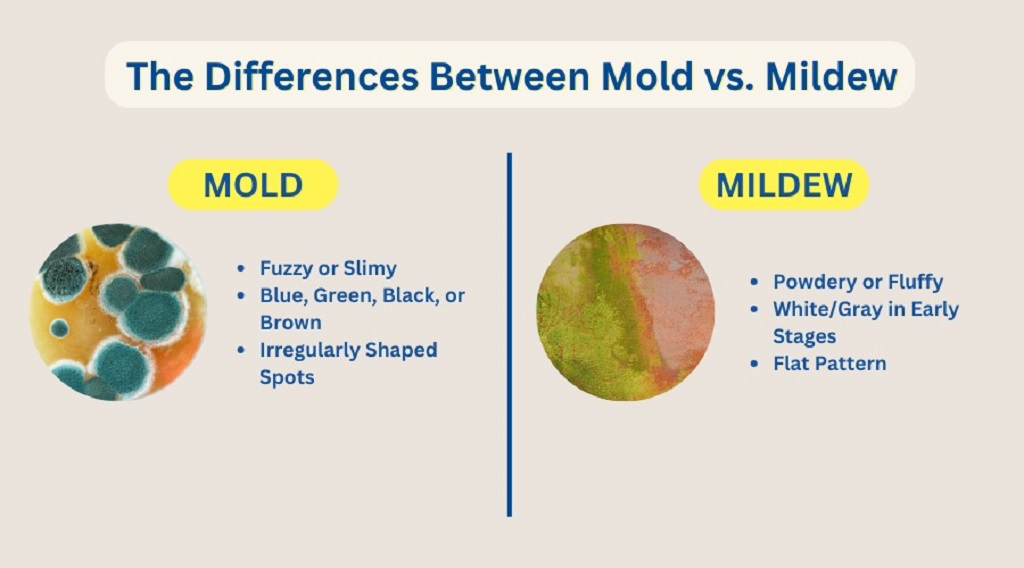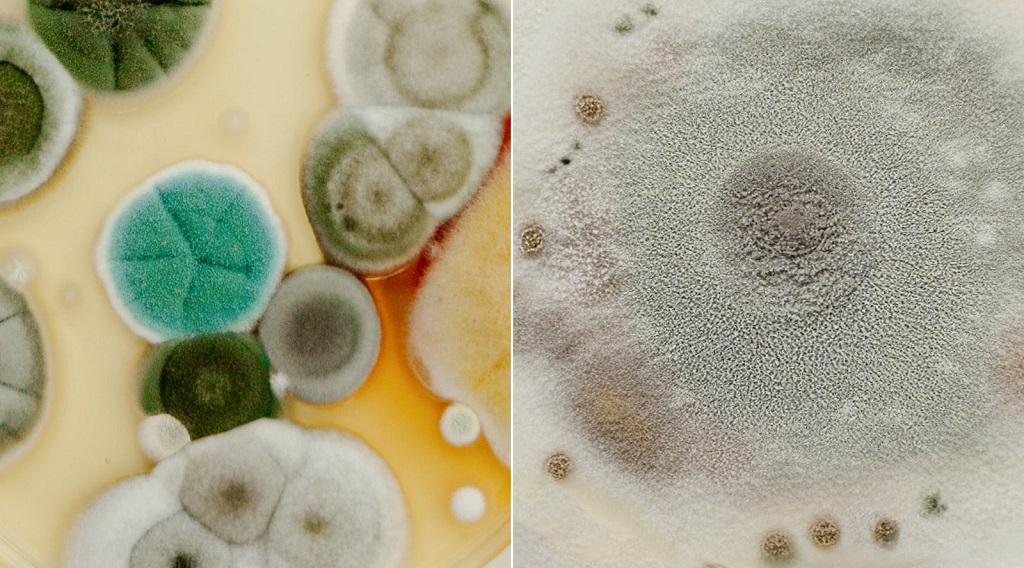When you pull out your favorite shirt and notice dark spots or a musty smell, your first thought might be mold or mildew. Though often used interchangeably, mold and mildew on clothes are distinctly different in appearance, behavior, and treatment. Understanding these differences helps protect your wardrobe and health, while also ensuring proper cleaning methods.
What Exactly Are Mold and Mildew?
Both mold and mildew are types of fungi that thrive in damp, humid environments. However, mold tends to be more aggressive, growing in patches that look fuzzy or slimy and can be various colors including black, green, or red. Mildew, on the other hand, usually appears powdery or fluffy and tends to be white, gray, or yellow. While mold often penetrates fabric fibers deeply, mildew typically stays on the surface, making it easier to remove.
Experts say the confusion between these fungi is common because they both prefer moist conditions and can appear on clothes stored in damp basements, gym bags, or laundry left sitting too long. According to the Centers for Disease Control and Prevention (CDC), mold exposure can cause allergic reactions and respiratory problems, which underscores the importance of tackling the issue promptly.
Identifying Mold vs Mildew on Clothes
Mold spots often look irregular and can spread quickly if left untreated. They might feel slimy or sticky to the touch. In contrast, mildew spots are flat and powdery, sometimes resembling dust. Another key difference is odor; mold has a strong, earthy smell, while mildew has a less pungent, musty scent.
One practical tip from cleaning professionals is to use a simple water test: mildew will usually rinse off easily, while mold remains stubborn. This quick test can save time and effort when deciding the right treatment method.
Why Does Mold and Mildew Grow on Clothes?
Moisture is the main culprit behind mold and mildew growth on fabrics. According to a 2023 study by the American Cleaning Institute, over 65% of households report mold issues linked to humidity and improper laundry drying. Clothes left damp for extended periods provide a perfect breeding ground for these fungi.
Additionally, organic materials such as cotton, wool, and silk are more prone to fungal growth than synthetic fabrics. Poor ventilation in closets or laundry rooms can also exacerbate the problem, allowing moisture to linger and mold spores to settle.
Health Risks Associated with Mold vs Mildew
While both fungi can cause skin irritation, mold presents a more serious health hazard. Mold spores released into the air can trigger asthma attacks, respiratory infections, and allergic reactions. Some molds produce mycotoxins, which have been linked to more severe health issues, including neurological problems in extreme cases.
Mildew, though less dangerous, can still aggravate allergies and cause unpleasant odors on clothes, making them unwearable. Given these risks, removing mold and mildew swiftly is crucial for both fabric longevity and personal health.
Effective Treatment Methods for Mold on Clothes
Treating mold on clothes requires more than just a quick wash. Experts recommend the following approach:
- Pre-treat affected areas with a solution of white vinegar or lemon juice, which naturally kill mold spores.
- Use hot water cycles in your washing machine to help eliminate mold.
- Add baking soda or borax to the wash to boost cleaning power.
- Sun-dry clothes whenever possible, as UV rays naturally disinfect fabrics.
If mold persists, professional cleaning services may be necessary, especially for delicate or valuable garments.
How to Treat Mildew on Clothes
Mildew generally responds well to milder treatments. Start by brushing off the powdery spots outdoors to avoid spreading spores indoors. Then:
- Soak clothes in a mixture of water and detergent or oxygen bleach.
- Wash in warm water with added vinegar to neutralize odors.
- Dry clothes thoroughly in sunlight or a well-ventilated area.
For stubborn mildew, repeat the washing cycle or try specialized mildew removers available in stores.
Prevention: The Best Strategy
Preventing mold and mildew is easier than treating them. Simple habits like drying clothes promptly, storing garments in dry, well-ventilated areas, and using moisture absorbers in closets can drastically reduce fungal growth.
Moreover, regularly cleaning your washing machine and dryer helps prevent mold buildup within appliances. Some experts even recommend using essential oils like tea tree or eucalyptus during washing for their antifungal properties.
Expert Opinions and Studies
Cleaning industry professionals consistently emphasize moisture control as the cornerstone of prevention. Dr. Michael Berry, a microbiologist, explains, “Mold and mildew require moisture to grow, so reducing humidity below 50% indoors significantly cuts the risk.”
Meanwhile, a 2022 Consumer Reports article advises consumers to avoid chlorine bleach for delicate fabrics, recommending gentler alternatives like vinegar or hydrogen peroxide instead.
Real-Life Examples
Consider Sarah, a fitness enthusiast who often stored damp workout clothes in her gym bag. After noticing black spots and a musty smell, she realized mold had set in. Following expert advice, she soaked her clothes in vinegar and washed them in hot water, successfully restoring them. However, she also improved ventilation in her laundry room, which prevented further issues.
Similarly, Mark, a collector of vintage clothes, found yellow powdery spots on his garments. Recognizing it as mildew, he brushed it off and soaked his clothes in oxygen bleach solution, preserving their quality.
Featured Snippet: Quick Expert Tips on Mold vs Mildew on Clothes
Q: How can I tell the difference between mold and mildew on clothes, and how should I treat them?
A: Mold appears as dark, fuzzy patches and has a strong earthy odor, while mildew looks powdery and is usually white or yellow. To treat mold, pre-soak affected areas with vinegar or lemon juice, wash in hot water, and dry in sunlight. For mildew, brushing off spots before washing with detergent and vinegar works well. Always dry clothes thoroughly to prevent recurrence. Avoid using chlorine bleach on delicate fabrics; opt for gentler antifungal treatments instead.
FAQs About Mold vs Mildew on Clothes
Can mold or mildew permanently damage clothes?
Yes. Mold can cause fabric fibers to weaken and deteriorate, while mildew typically stains and weakens fabric if left untreated.
Is it safe to wear clothes with mold or mildew?
Wearing moldy clothes can cause allergic reactions or skin irritation. It is best to remove fungi before wearing.
Will washing alone remove mold or mildew?
Regular washing may not fully remove mold, especially if done in cold water. Pre-treatment and hot water washing are more effective.
Can mold or mildew spread to other clothes?
Yes, spores can transfer during storage or washing, so isolate affected clothes and clean machines after washing.
Is bleach effective against mold and mildew on clothes?
Bleach can work but may damage colored or delicate fabrics. Vinegar and hydrogen peroxide are safer alternatives.
How can I prevent mold and mildew in humid climates?
Use dehumidifiers, ensure good air circulation, dry clothes promptly, and store garments in moisture-free environments.
Can mold grow on synthetic fabrics?
Mold can grow on synthetic fabrics, but it prefers natural fibers that retain moisture and nutrients.
Read More Also: Lucky Luciano Ring
Final Thought
Understanding Mold vs Mildew on Clothes – What’s the Difference & How to Treat empowers you to safeguard your wardrobe and health. The key lies in identifying the fungi correctly, applying the right cleaning methods, and most importantly, preventing moisture buildup. By adopting simple hygiene and storage habits, you can banish these unwelcome invaders for good and keep your clothes fresh and wearable.





